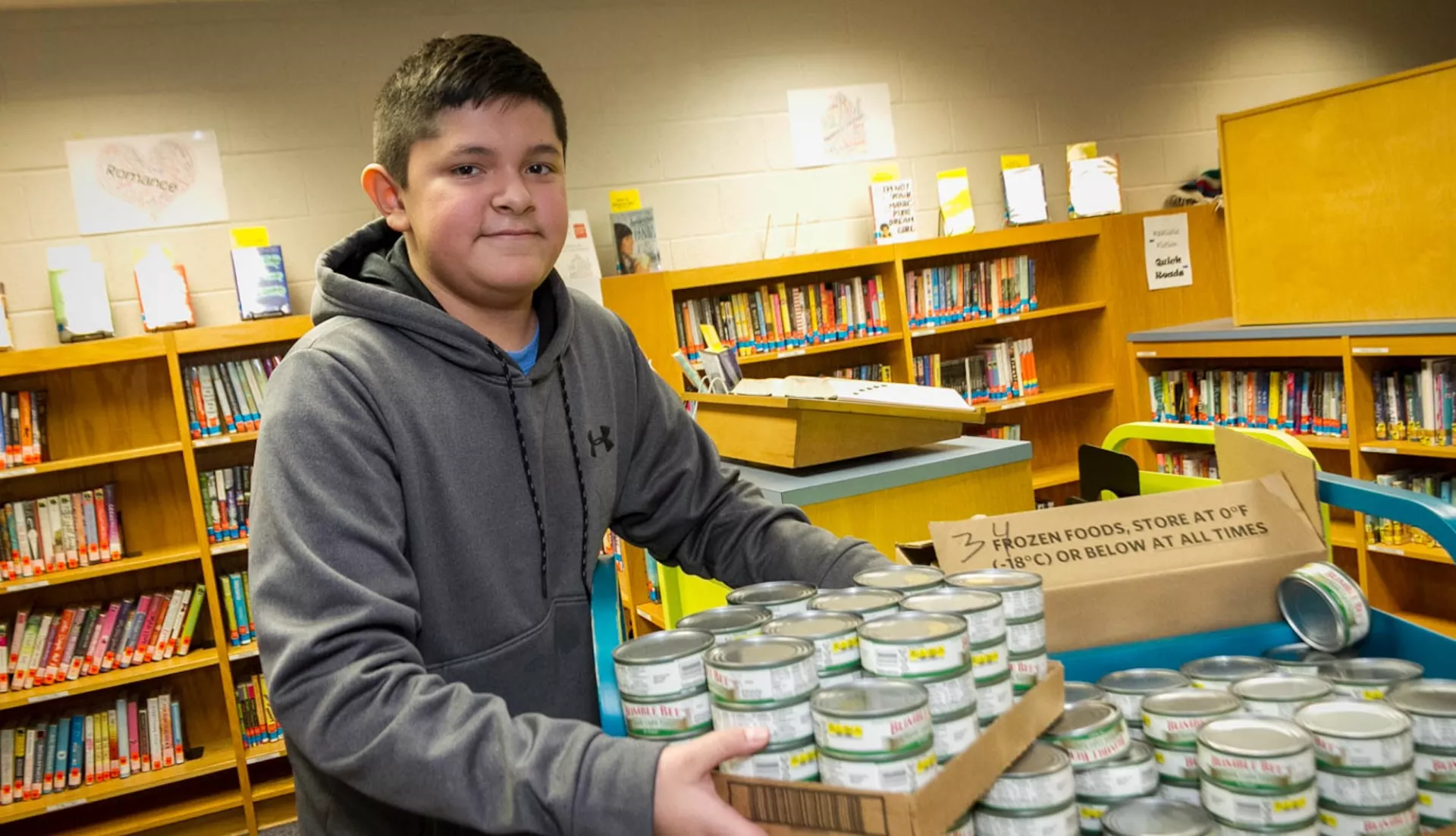Key Takeaways
- The Biden Administration recently announced another $74 million for community school efforts.
- Current legislation, backed by NEA, calls for an additional $3.65 billion over the next five years.
- NEA has helped boost the nationwide growth of community schools with its advocacy and parternships.
Deanna Hron touches the lives of thousands of people each year, both within bustling King Elementary School and among the families in the surrounding small town of Deer River and in the rural area of northcentral Minnesota the school serves.
However, one grandfather who cares for eight grandchildren was on her mind this fall as the region’s frigid winter approached.
“We had struggled to have him engage with the school although we have been in touch with him a lot, including by providing food and other necessities. But lately he has come to an open house and to parent conferences and communicated with us. He is reaching out to us when he needs something from us or the community partners we have developed. Building a relationship and trust has paid off.”
He is a success story for the community school effort at King, which has thrived thanks to the enthusiasm and persistence of Hron, its coordinator, and her staff – along with support from NEA and the Biden Administration, which recently announced another $74 million for community school efforts nationwide. Legislation, backed by NEA, also recently has been proposed providing an additional $3.65 billion over the next five years.
Hron and King Elementary are in the fourth year of a $2.5 million, five-year grant from the federal Full-Service Community School program, that has brought additional wrap-around services into the school for its students and families and has helped make the school more of a cultural and resource center for the region that surrounds it.
“One of the things I love about this small community is that we look out for each other,” Hron says. “My school has become a hub for that sort of connection and care. And our students have clearly benefited from it.”
She learned about community schools during NEA conferences, and moved from her position as a kindergarten teacher to become the school’s community school coordinator as the grant money became available. She participated in NEA training on community schools and got the support of coaches from NEA who helped her identify priorities for her school, which serves a diverse group of students, some of whom travel more than an hour to school and many of whom live in poverty.
Gaining Attention
NEA has helped fuel the booming nationwide growth in community schools with such support for local programs, along with legislative advocacy and resources such as this guide to initial steps in their formation.
Most recently, NEA is looking forward to partnering with Duke University to expand community schools in North Carolina. In the latest round of funding announced by the Biden Administration, Duke received nearly $10 million, bolstering the work the university can do with schools and districts in the state in collaboration with NEA’s Community Service Implementation Institute.
One of the first steps for Hron was coordinating resources for students and families to help provide mental health, dental, medical, and vision services. She and the four others who work in the community school program, made arrangements for four mental health professionals to come to the school regularly. They have developed a food bank and clothing closet with community support and opened the school to local groups to run more sports activities and educational program from organizations that serve the farming community and the large population of Native Americans in the region.
The school nurse offers additional services in the community, while local health care providers and dentists more efficiently and thoroughly serve school families thanks to the networks Hron and her group have developed.
Hron’s group often provides extra transportation or delivers needed goods to families and found subsidizing a second bus run was very successful, getting students to school who benefit from a slightly later trip on occasion when they’ve missed the initial bus because they are independently preparing for school or their parents are overwhelmed.
“Often, if a student misses the bus, their family doesn’t have a way to transport them to school,” Hron said. “If we are able, we will pick up students so they don’t miss a whole day of school.”
Apart from creating goodwill and improving health and other services, the effort has raised test scores and cut absenteeism significantly, she says, and research from the Learning Policy Institute (LPI) has shown that “well-implemented community schools lead to improvement in student and school outcomes and contribute to meeting the educational needs of low-achieving students in high-poverty schools. It noted that “sufficient research exists to meet the Every Student Succeeds Act (ESSA) standard for an evidence-based intervention”.
Thanks to an active community school program at Mahatma K. Gandhi Community School in Jersey City, NJ, school officials report that attendance was at 93 percent this year, and the percentage of chronically absent students has decreased from 41 percent to 21 percent.
Future Support
“All students, no matter their race or ethnicity, gender, in urban, suburban, and rural communities, deserve a safe and welcoming school where they can thrive. Community schools play a critical role in delivering targeted and specific educational opportunities for students while also offering hope, opportunity, and transformation to entire communities,” NEA President Becky Pringle said in response to an announcement by U.S. Sens. Sherrod Brown (D-OH) that he and other key senators – Chris Van Hollen (D-MD), Kirsten Gillibrand (D-NY), and Ben Ray Luján (D-NM) – had introduced legislation providing funding and support for The Full Service Community School program over more five years. Similar legislation is being introduced in the House of Representatives by U.S. Rep. Susie Lee (D-NV-3)
“National Education Association commends Senator Brown and Congresswoman Lee for their leadership in introducing the Full-Service Community Schools Expansion Act of 2023, which would improve and increase the federal investment in the community schools program,” Pringle added They understand and share in the vision that every student must be prepared to succeed in a diverse and interdependent world, and this federal legislation helps put students on that path.”
That legislation would provide funding that has steadily increased for FSCS from about $5 million initially in 2008 to about $75 million for the last two years.
More states are also providing funds, according to Tiffany Miller, director of federal policy for LPI, which tracks activity at the federal and state level.
“There is more and more interest in community schools – and many more districts and states helping to develop and grow community school programs. That’s beneficial in obtaining federal support, which now includes state set-aside funding.”
The Coalition for Community Schools reported that research has shown some 60 percent of schools were using a “community schools or wrap-around services model at the start of the school year – up from about 45 percent last year”.
Miller and other experts point out that often schools can gain support for community school efforts by tapping into other state or federal funds available for some of the needs they are addressing with the program. LPI has produced this report about other federal funding sources.
A White House Toolkit for federal resources also offers details about funding opportunities throughout the federal government, organized by what it recognizes are the four pillars of community schools: integrated student supports; active family and community engagement; expanded and enriched learning time and opportunities; and collaborative leadership practices. It also offers a list of resources that can improve understanding of community schools and give advocates approaches to promote them.



